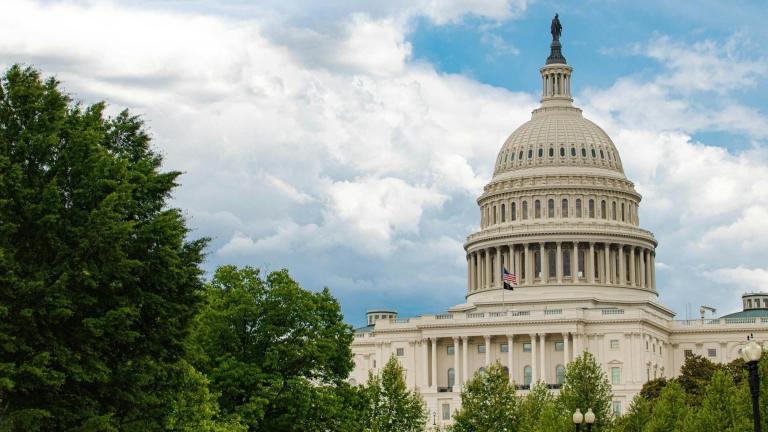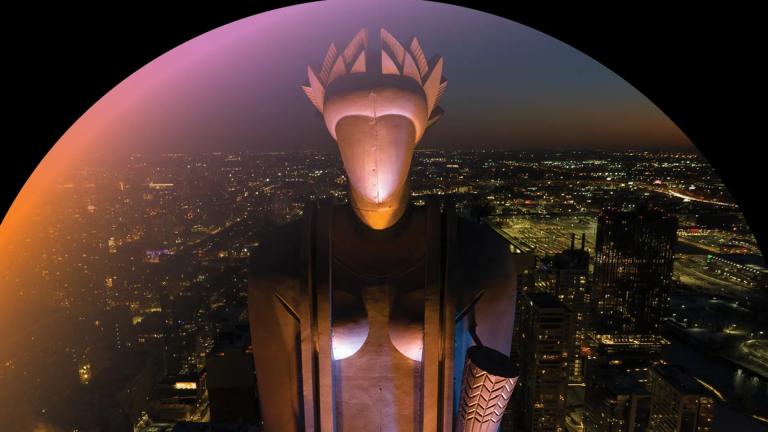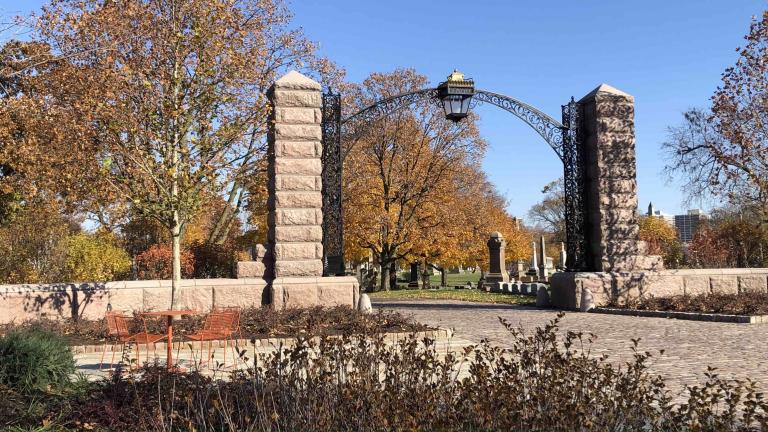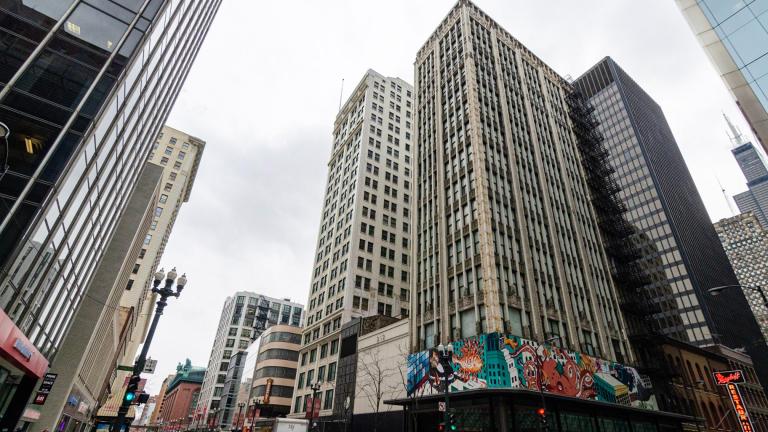A great deal of Chicago’s worldwide fame lies in its architecture, specifically the skyscrapers that dominate the skyline.
But there are treasures to be found among the smaller and less showy buildings. And there’s one that may not seem to the casual viewer, at first, to be that important. But the historic legacy of the former Johnson Publishing building is considerable. And because of that the city is now considering a landmark status designation.
TRANSCRIPT
Eddie Arruza: In a city of towering architectural showpieces, it’s hard to get noticed when you’re a stark modernist building clad in unadorned granite and only 11 stories tall.
That’s the unassuming design of the former Johnson Publishing headquarters at 820 South Michigan Avenue. But there’s a lot more to this structure than meets the eye.
Lee Bey, architecture critic: It was designed by a pioneering architect for a pioneering client, John H. Johnson, who published Ebony and Jet and other things out of here, and the product that was produced out of here is also historic in its own rights.
Arruza: When the Johnson Publishing building was completed in 1971, it stood as a beacon of growing African-American commerce and enterprise. City officials say it remains the only downtown tower commissioned and designed by African-Americans.

And while the iconic Ebony/Jet sign remains atop the high-rise, the magazines are no longer owned by the Johnsons. In 2010 the family sold the building to Columbia College. But a plan to turn it into Columbia’s library fizzled and the building has now stood vacant for several years. The college has now put it back on the market.
Richard Dowsek, Columbia College: They feel as we feel that the best way to honor the Johnson legacy is to return the building to some kind of useful economic life. They’ve been very supportive of the idea of making just the east façade of the building landmark and as of right now there are no interior space designations.

Arruza: Throughout John Johnson’s long and pioneering career, his mission was always to elevate the standing of African-Americans and that factored into his plans for his downtown headquarters.
Bey: He specifically wants a black architect to design the building. He says in his biography, "If I can’t do it then who’s going to do it?"
Arruza: The architect Johnson chose was John Warren Moutoussamy, a 1948 graduate of the Illinois Institute of Technology, where he studied under one of the greatest masters: Mies van der Rohe.
 Lee Bey
Lee Bey
Bey: Those sort of columns that run up and down on the building are not just there decoratively they actually hold the building up so the exterior walls don’t have to – so maybe he was even thinking about expansion at some point. So these are the kinds of things he would have learned under Mies van der Rohe.
Arruza: Moutoussamy designed his own home on East 89th Place and it clearly shows Mies’ influence, as do some of his larger works, including Richard J. Daley College on the city’s Far Southwest Side and the Chicago Urban League building.
But when he designed the Johnson building at the start of the ‘70s, Moutoussamy decided against the steel exterior that defined Mies and instead used stone.
Bey: The building really becomes an expression of the forward motion of black people, of African-Americans, particularly during this time.
Arruza: The African-American experience also dominated the interior design of the building, with vibrant colors and a high-style ‘70s mod on every floor.

John Johnson’s top floor office had the latest in electronic gadgetry as well as a spectacular lake view. Nearby, he had his own private barbershop. But today the office is gutted as are most of the floors with only some isolated reminders of the company’s powerhouse days. In the center of one floor is an oasis of elegance used for the company’s Fashion Fair Cosmetics.
Also still largely intact is a quasi-psychedelic room. It’s the test kitchen used for Ebony Magazine’s monthly feature, A Date with a Dish.

These are Plexiglas cabinets with an orange refrigerator to match, and the avocado green that was such a hit in the era of “The Brady Bunch.”
Bey: We don’t know the reuse of this building. In my dream it becomes a boutique hotel – a unique place that will allow some of these interiors to remain, but the interiors are not part of the landmark designation so they won’t be required to keep them.
Arruza: Columbia College says it’s in talks with one developer that could preserve some of the Johnson legacy.
Dowsek: They are a local firm that does a lot of residential redevelopment of historic buildings and we just signed a letter of intent so we have a ways to go with them but it could be that we close on the sale of the building around the same time as the landmarks process concludes.
![]()
A decision by the Chicago Landmarks Commission is not expected until later this year. In the meantime, Columbia College tells us that many of the original items belonging to John Johnson were retrieved from the iconic building by his family and word is that artist Theaster Gates is curating an exhibit of Johnson Publishing artifacts.
Related stories:
 Blair Kamin Weighs in on $500M Willis Tower Renovation
Blair Kamin Weighs in on $500M Willis Tower Renovation
Feb. 8: Big changes are in the works for Willis Tower. Architecture critic Blair Kamin gives us his read on that and the latest on the South Works project.
 Former Johnson Publishing Building Considered for Landmark Status
Former Johnson Publishing Building Considered for Landmark Status
Feb. 3: The landmark designation process started Thursday for the 110,000-square-foot S. Michigan Avenue building designed by black architect John Warren Moutoussamy.
 Obama Library to be ‘Center for Citizenship’
Obama Library to be ‘Center for Citizenship’
Jan. 20: Hours before the inauguration of Donald Trump, President Barack Obama and first lady Michelle Obama released a video outlining their plans for the future Obama Presidential Center.








